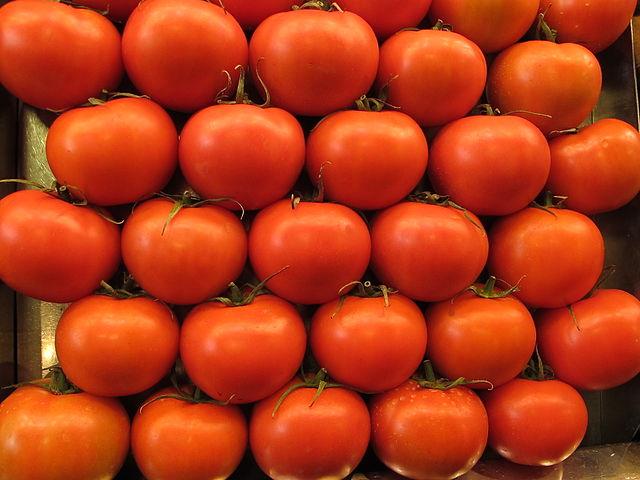鲜味
来自维基百科,自由的百科全书
鲜味与酸味、甜味、苦味、咸味并称为五种基本味觉,通常在鱼、肉等富含蛋白质的食物中可以品尝到。
此条目翻译品质稍有不足。 |


背景
从20世纪以来,科学家一直在争论鲜味是否确实是一种基本味觉;但1985年在夏威夷第一个鲜味国际讨论会中,鲜味(日语:旨味/うまみ umami)一词获得官方认可科学字词,用来描述谷氨酸盐及核苷酸的味道[3],现在已广泛接受为第五种基本味觉。Umami表示氨基酸L-谷氨L酸盐和5'-核糖核苷酸,如鸟苷酸(GMP)和肌苷酸(IMP)的味道[4]体现出一种令人喜悦的“肉汁”或“肉”味,舌上的感觉回味绵长,无处不至,令人垂涎。因为在此之前欧洲缺乏对鲜味的专用称呼,鲜味在几乎所有西方语言中同样称为umami。由于人和动物舌头上有特殊的感受器细胞,使得舌头能够检测到谷氨酸盐的羧化物阴离子[5][6]。鲜味的基本作用是平衡和丰满菜肴的整体味道,亦可以增强各种食物的美味[7]。由于谷氨酸盐易于离子化,谷氨酸盐(例如谷氨酸钠)会具有少量的鲜味。GMP和IMP能加强谷氨酸盐的味道浓度[6][8]。
发现

谷氨酸盐在烹调方面的历史源远流长[9]。古代罗马已使用富含谷氨酸盐的鱼酱[10],而中国的发酵酱油在一世纪的文献中也已有记载[11]。19世纪末,厨师Auguste Escoffier在巴黎开设革新餐厅,并创出包含咸、酸、甜、苦和鲜味味道的菜式[12]。不过,他当时并不知道此独特味觉的化学来源。
直到1908年,东京帝国大学教授池田菊苗[13]才正确鉴别出鲜味。他发现了谷氨酸盐能令海带鱼汤变得美味可口。他注意到海带汤汁的味道有别于甜、酸、苦、咸,因此将其命名为“うまみ”(即现在的鲜味)。
后来,池田教授的弟子小玉新太郎在1913年发现干鲣鱼片中含有另一种鲜味物质,就是核苷酸IMP[14][15]。1957年,国中明发现香菇中所含有的核苷酸GMP亦会产生鲜味的味道[16][17]。国中最重要的发现之一是核苷酸和谷氨酸盐之间的协同效应:当富含谷氨酸盐的食物与含有核苷酸的成分结合时,所形成的味道强度均高于这些成分的总强度。
此种鲜味的协同效应能够说明不同经典饮食文化的食物搭配。例如日本人使用海带和干鲣鱼片制作鱼汤、中国人在鸡汤中加入韭菜和卷心菜、苏格兰人制作青葱马铃薯鸡汤,以及意大利人将帕马森干酪和蘑菇洒在蕃茄汁上。
特性
鲜味会引导舌头分泌唾液,刺激喉咙、口腔的上方和后方[18][19]。鲜味会使多种食物令人垂涎,特别是在配合香味方面[20]。但有别与其他基本味道,鲜味不含蔗糖,只在相当狭窄的浓度范围内带来愉悦效果[18]。最适宜的鲜味味道视乎盐的份量而定;同时,低盐食物能以适量鲜味保持令人满意的味道[21]。
事实上,Roinien et al.[来源请求]显示:当汤水含有鲜味时,低盐汤水的愉悦感、味道浓度和理想咸度较高,而不含鲜味的汤水的愉悦感较低[22]。某些人群(如老年人)可以从鲜味中得益,因为其味觉和嗅觉灵敏度已因年龄和多种药物而受损。丧失味觉和嗅觉有可能形成营养不良的状态,从而增加患病的风险[23]。
高含量食物
人们每日食用的许多食物都富含鲜味。天然谷氨酸盐可于肉类和蔬菜中找到,肌苷酸主要来自肉类,而鸟苷酸则来自蔬菜。因此,在谷氨酸、IMP和GMP这些含量较高的食物中,鲜味很常见,特别是鱼、贝类、咸肉。根据演化论,真菌与动物的亲缘关系较植物更近,因此在蘑菇等菌类中,鲜味含量较高。相比之下,蔬菜如成熟的番茄、白菜、波菜或是绿茶等,以及发酵制品或陈年制品如芝士、虾酱、酱油等含有的鲜味较菌类更低[24]。
人类首次接触到鲜味通常是从乳汁[25]。乳汁与鱼汤的鲜味大致相同。不同国家的汤料有一些不同之处:日本高汤通常具有非常纯正的鲜味味道,因为汤底并非由肉类制成,而是由富含L-谷氨酸的海带(Laminaria japonica)和富含肌苷酸盐的柴鱼片和小沙丁鱼干。相反,西式或中式清汤中的鲜味大多源于骨头、肉和蔬菜,混合的氨基酸种类更多,因此味道也变得更加繁复。
味觉感受器
舌头及口腔中其他区域的每个味蕾均可侦测鲜味,并无所谓味觉图分工一说。生物化学研究识别出的负责感知鲜味的味觉感受器,有mGluR4、mGluR1和1类味觉感受器(T1R1+T1R3)等几种[26][27][28]。纽约科学院证实味觉感受器具有认受性,指出“最近的分子生物学研究已经鉴别出感受器中鲜味的主要承担者:有异二聚体T1R1/T1R3以及失去大量N端胞外域的截断型1和4-代谢性谷氨酸盐感受器(味觉-mGluR4和截断型-mGluR1)以及大脑-mGluR4。”[5]感受器mGluR1和mGluR4特别用于检测谷氨酸盐,而T1R1+T1R3负责国中明于1957年描述的协同效应。不过,每类感受器在味蕾细胞方面的特有角色仍然不明。它们属于G蛋白质相连的感受器(GPCR),备有类似的信号模组,当中包括G蛋白质β-γ、PLCb2以及来自细胞内储存的PI3传讯释放的钙离子(Ca2+)[29]。Ca2+活化选择性阳离子通道瞬间怠应器潜在的melastatin 5(TrpM5),引致细胞膜退极化因而释放ATP和包括血清胺在内的神经传送素的分泌[30][31][32][33]。对鲜味味道刺激起反应的细胞并没有典型的突触,但ATP将味觉信号传送到味觉神经,然后再传到大脑以解读并识别味道品质[34][35]。
参考文献
外部链接
Wikiwand - on
Seamless Wikipedia browsing. On steroids.
